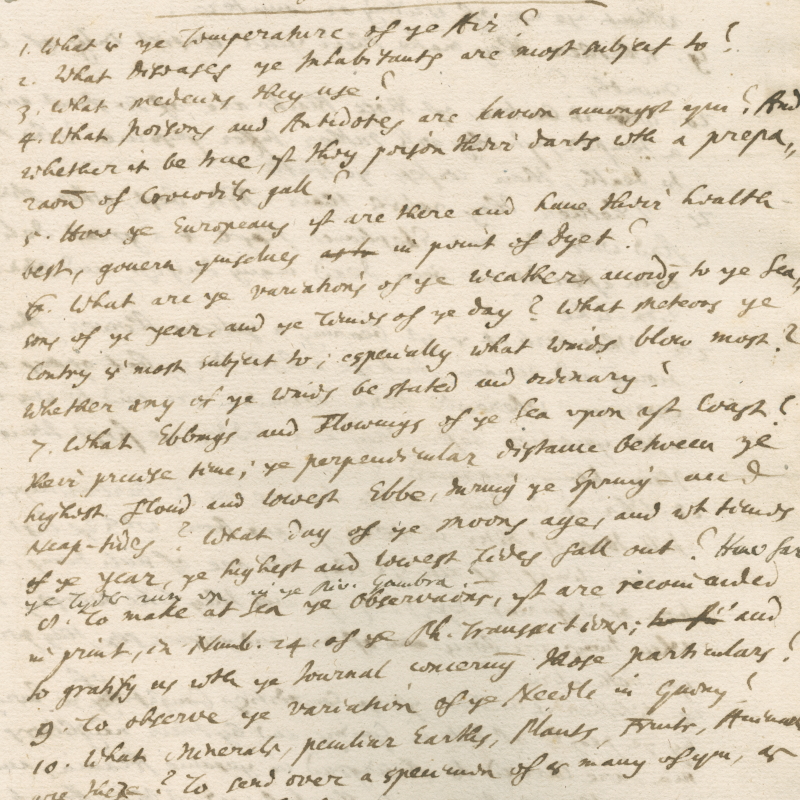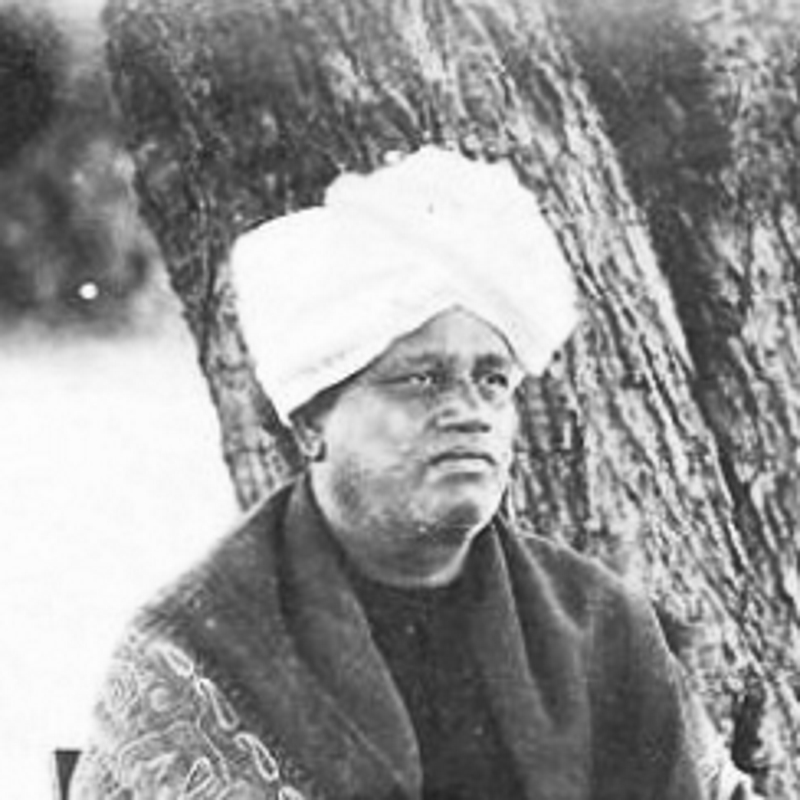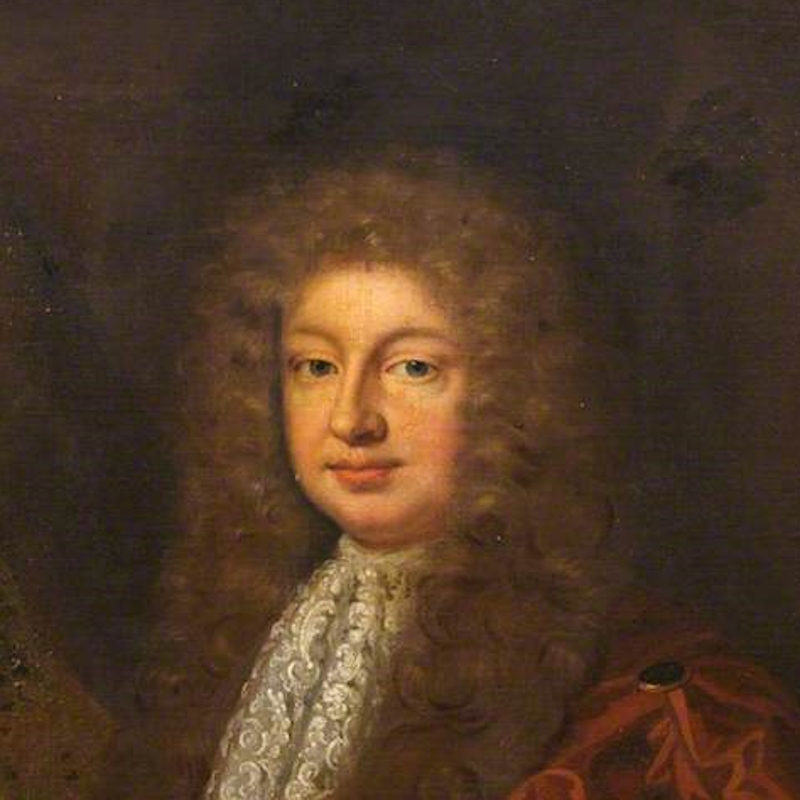The Royal Society's Edward Sabine correspondence is a treasure trove for research on everything from terrestrial magnetism to British activities in Africa, as Hirra Ateeq discovers.
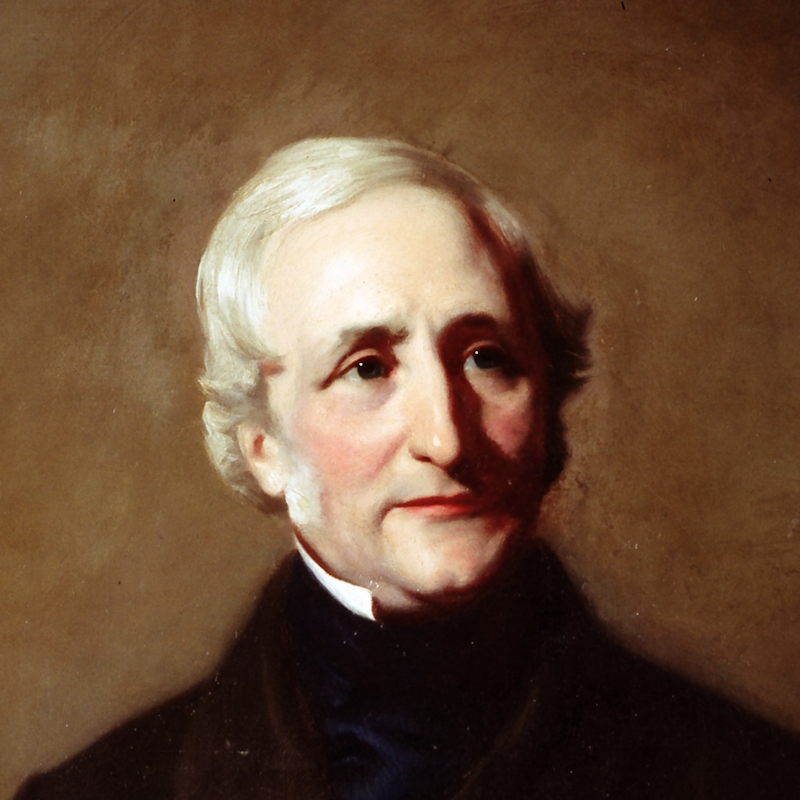
The Sabine correspondence in the archives of the Royal Society is a treasure trove for researchers looking into the scientific and cultural landscape of the nineteenth century.
Edward Sabine (1788-1883) entered the Royal Artillery from the Royal Military Academy in Woolwich and eventually attained the rank of Major-General. He was elected to the Royal Society in 1818, and went on to serve as President from 1861 to 1871. He is the only person to have held all the Royal Society’s four senior officer posts: President, Treasurer, Secretary and Foreign Secretary. His lengthy career and varied connections put him in a unique position of influence, at the heart of scientific discovery.
The Sabine correspondence, reference MS/257, consists of five volumes of letters sent to and from Edward Sabine between 1818 and 1875. Arranged alphabetically by name of correspondent, the volumes include a host of prominent nineteenth century scientists, such as James Clark Ross, James David Forbes and John Peter Gassiot.
As Sabine was one of the main architects of the British Magnetic Survey (commonly referred to as the 'Magnetic Crusade') it’s not surprising that many of the letters in his collection refer to terrestrial magnetism, as well as the establishment of numerous magnetic observatories around the globe.
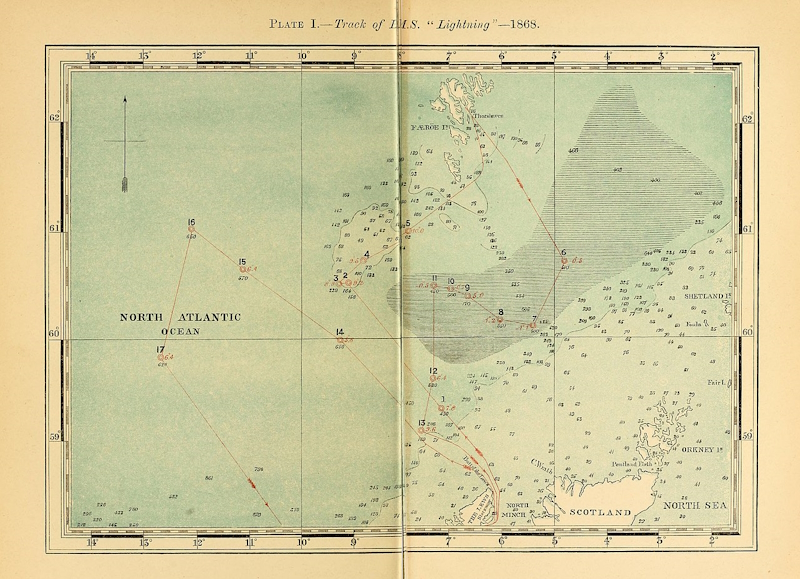 Track of HMS Lightning in 1868 (public domain via Wikimedia Commons)
Track of HMS Lightning in 1868 (public domain via Wikimedia Commons)
Other notable marine topics discussed within the Sabine correspondence include the US Coast Survey, which existed between 1807 and 1970 and was responsible for mapping and charting the coast of the United States of America, and the Lightning expedition. This latter voyage, referred to in a letter to Sabine from William Benjamin Carpenter, was a deep-water dredging survey in the north Atlantic in 1868 on the ship HMS Lightning. This forerunner to the more famous Challenger expedition was championed by the Royal Society and supported by the Admiralty.
Optical matters also turn up in MS/257: there are handwritten notes by John Herschel on ‘directions for using the Photometers', and MS/257/5/158 which features a study of a system of ‘equilibrated levers’ made by Thomas Grubb (1800-1878). These were devised for the Armagh Cassegrain telescope and applied to the twin speculum mirrors of the Great Melbourne Telescope.
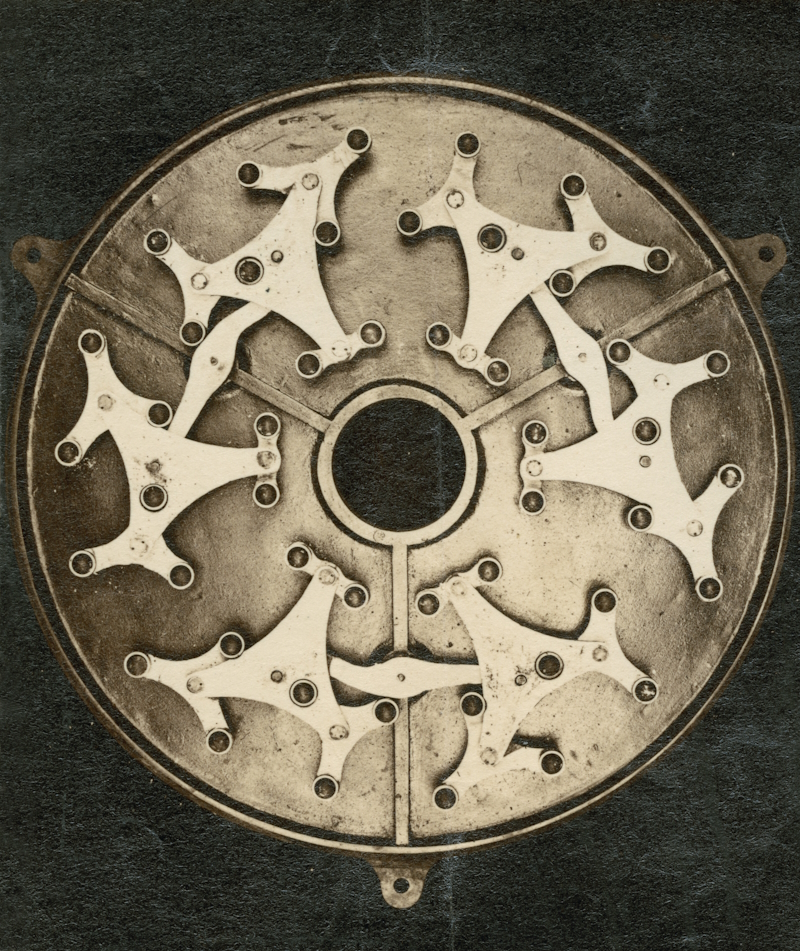 Mirror cell for the Great Melbourne Telescope speculum (RS.9291)
Mirror cell for the Great Melbourne Telescope speculum (RS.9291)
Few women are represented in the Sabine correspondence, but there is one notable exception. Elizabeth Juliana Leeves Sabine, wife of Edward, was an accomplished scientist in her own right, publishing translations of scientific works from German to English. In MS/257/2/284 John Herschel remarks on Mrs Sabine’s translation of Alexander von Humboldt’s Cosmos, and in MS/257/1/1 Antoine d'Abbadie congratulates her on translating Heinrich Wilhelm Dove’s writings and on their publication.
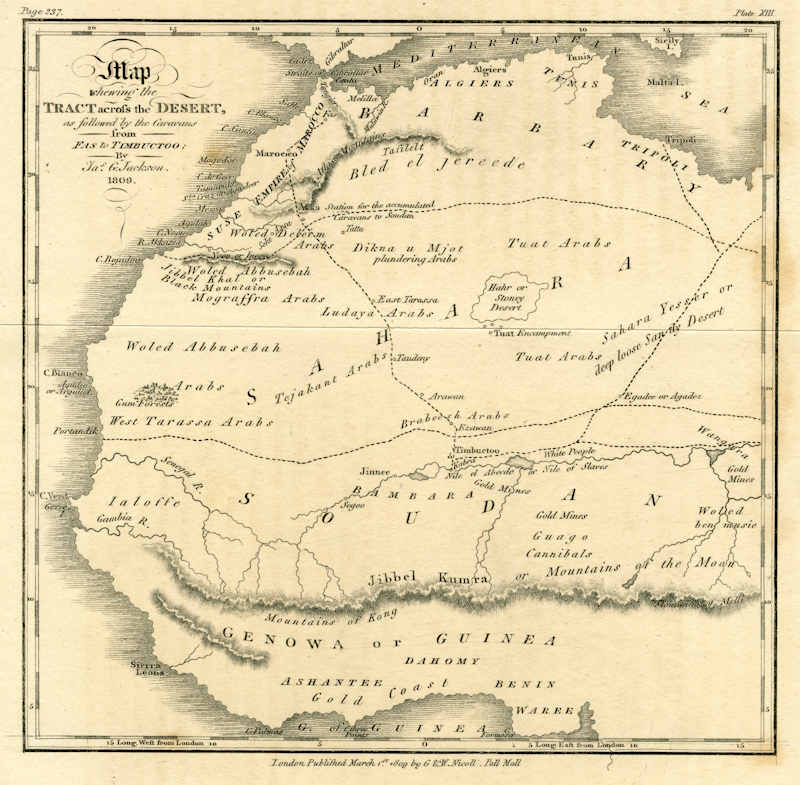 Map of North Africa 1809 (RS.13566)
Map of North Africa 1809 (RS.13566)
However, the most interesting (if troubling) item I came across while cataloguing the material was an extract of a letter from Edward Sabine regarding British 'possessions' on the Gold Coast, written while he was on board HMS Pheasant in the Bight of Benin in 1822. During this time Sabine was travelling the world with his pendulums, carrying out measurements at different latitudes including the coasts of Africa and the Americas.
Sabine starts by referring to the Cape Coast Castle and describing it as the 'headquarters' of the African Company. Further research led me to discover that the castle in question was also known as a 'slave castle'. The fort was a trading post, in what is now Ghana, built by Hendrik Caerloff for the Swedish Africa Company in the seventeenth century and initially named Carolusborg. It held enslaved Africans before they were forcefully taken onto ships and sold in the Americas. The English captured Carolusborg in 1664 and renamed it Cape Coast Castle, making it the new capital of English possessions on the Gold Coast.
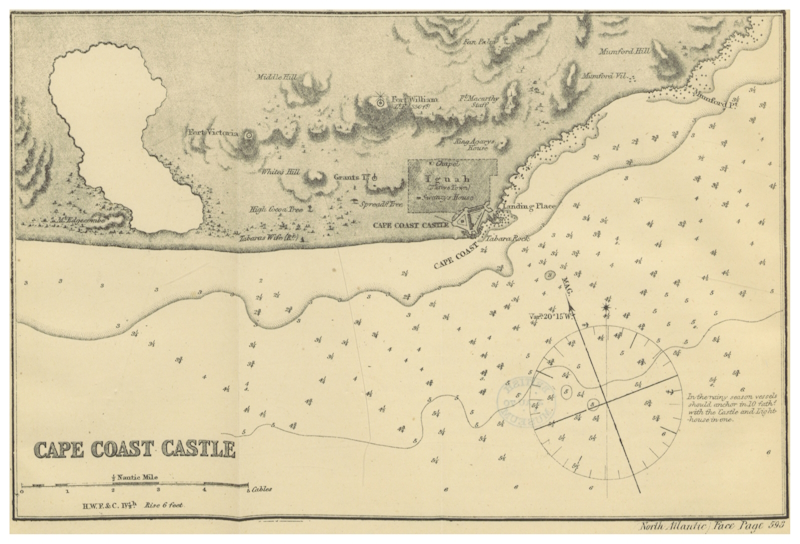 Map of Cape Coast Castle (public domain via Wikimedia Commons)
Map of Cape Coast Castle (public domain via Wikimedia Commons)
By the time of Sabine’s letter of 1822 the Atlantic slave trade had been abolished and the castle was in use as an administrative centre for the British; the African Company of Merchants had been dissolved in 1821. The letter refers to ‘dwellings’ outside the castle walls for former officers of the African Company who remained merchants, and a ‘native town which is rebuilding at a more convenient distance (having been too close before)’. Sabine describes land and a stream a few miles from the castle that Sir Charles MacCarthy had identified as the site of towns for formerly enslaved Africans.
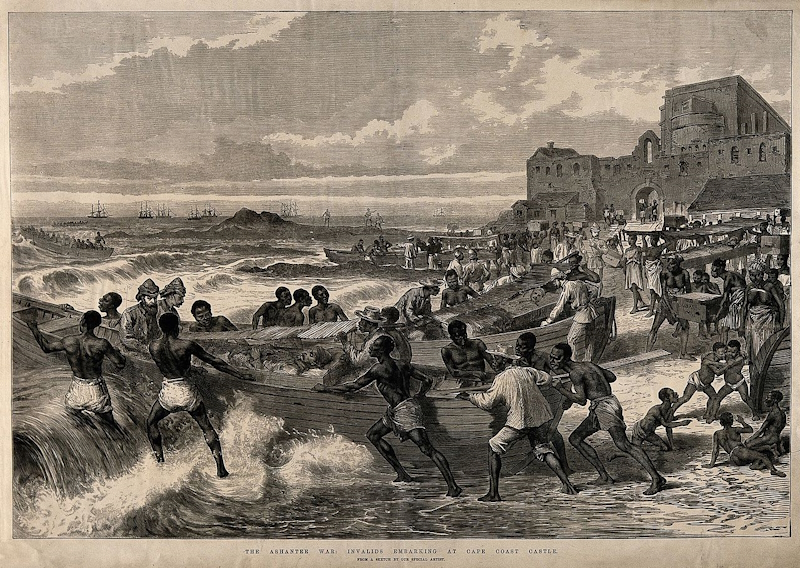 Anglo-Ashanti War (public domain via Wikimedia Commons)
Anglo-Ashanti War (public domain via Wikimedia Commons)
Sabine goes on to note the conflict and tensions between the Ashanti Empire and the Fante Confederacy, in which the English supported the Fante against Ashanti forces. Sabine describes the Ashanti Empire conquering the country of the Fante, who were ‘attacked and destroyed under the very walls of the forts’. According to Sabine, the strength of the Ashanti Army had been exaggerated; however, a year later British forces suffered major losses in the first years of the Anglo-Ashanti War 1823-1831.
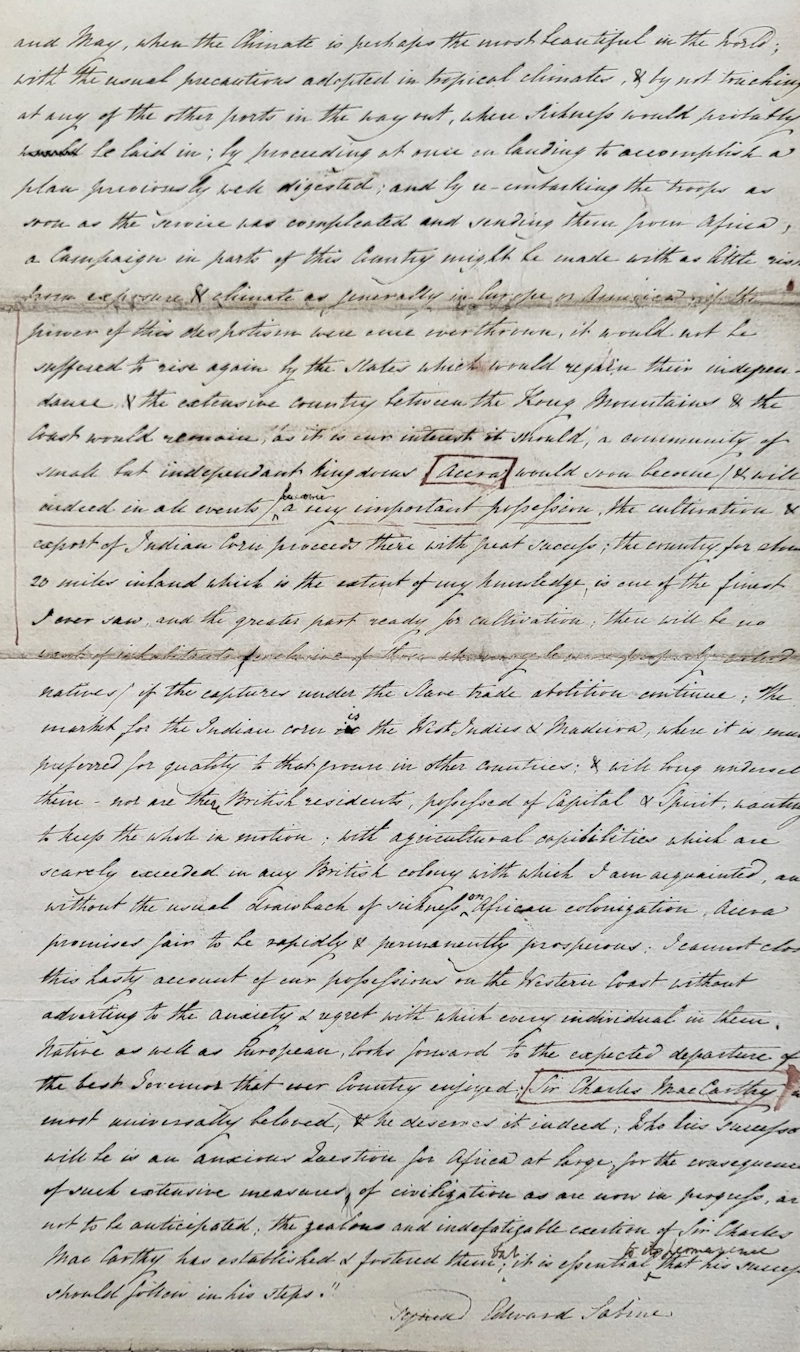 Extract of Sabine’s letter from HMS Pheasant in the Bight of Benin (MS/257/4/3)
Extract of Sabine’s letter from HMS Pheasant in the Bight of Benin (MS/257/4/3)
MS/257/4/3 is a document of historical significance at a time of war and conflict, filtered through one scientist’s observations. Valuable, not just for the science, but in allowing us to see Sabine’s opinions, the attitudes of his fellow Europeans, and to gain glimpses into the post-abolition period.
Top image: portrait of Edward Sabine by Stephen Pearce, 1855 (RS.9683)


